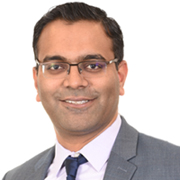Greater awareness – and a renewed desire for change
In the wake of this pandemic, there have been three realizations that are just as applicable to climate change and the increased risk of natural disasters:
- These threats are global, not regional
- Globalization has made these events far more likely to occur
- Coordinated action and information sharing is essential for resilience
The world is now entering a critical period. In our experience, we’ve seen that the greatest leaps towards resilience are made in the wake of destructive events. And indeed, many entities are openly rethinking their approach to systemic risk.
Climate risk must be part of this dialogue. While much of the work required to address climate change is longer-term, there are immediate actions that all stakeholders can take towards developing resilience.
Here, we look specifically at the insurance industry, highlighting the central role that it must play.
1. Better education and information sharing around prevention
The insurance industry knows risk. They have an advanced understanding of climate risk and have developed substantial tools to model, analyze and forecast extreme events. The intelligence it holds is invaluable for public and private enterprises to better identify weaknesses and plot a course towards prevention. More of this information must be shared between insurers and public and private enterprises.
Additionally, many insurance companies have done extensive work to understand how to build resiliently. These efforts have delivered firm guidance on materials and construction practices that improve the physical resistance of buildings against wind, wind-driven rain, hail and wildfire.
By better educating construction companies and property owners on these building practices, the insurance industry can help bring significant improvements in safety as well as economic resilience.
2. Sharing critical insights to inform policymaking
From a U.S. perspective, building codes and land-use planning standards are inconsistent. This causes some areas to be far more vulnerable to natural disasters than others.
In our view, these minimum requirements are not as strong as they could or should be. In many non-coastal states, for example, most buildings are only required to withstand 90 mph winds, equivalent to only a relatively modest tornado.
Once again, the insurance industry possesses valuable insights. For example, risk modeling can help public bodies identify areas most at risk. This can inform these at-risk communities on how to grow resiliently, build wisely and create natural buffer zones.
Ultimately, this work can toughen standards and create consistency across vulnerable regions.
3. Closing the insurance gap
Insurance itself is critical for resilience. Communities with coverage and at appropriate levels of coverage will have the funds needed to repair and rebuild in the wake of a catastrophe, promoting a faster return to normalcy.
Unfortunately, insurance gaps – the difference between overall and insured losses – persist throughout the U.S. For example, there are significant gaps in flood coverage, especially in non-coastal areas. Many public entities also have difficulty procuring the appropriate coverage, due to being restrained by very tight financial budgets.
To close these gaps or prevent them from growing, the insurance industry must do more to educate communities about the risks they face – especially in light of climate change – and about the economic buffers that insurance provides.
Meaningful change is possible
As we adapt to post-pandemic life, society is reimagining what is possible. Already, the world has at least temporarily shifted from an office-bound to a largely remote workforce. But what else is possible?
We would hope that this paradigm shift includes more sustained, long-lasting developments towards climate-friendly ways of working and living. Yet as we consider a better tomorrow, we must also embrace the opportunities for more immediate action today. The steps we take today towards resilience will have an immense effect on our ability to prepare for – and help prevent – future disasters.
Downloads
Munich Re Experts
/Pischetsrieder-Ingo.jpg)


Related Topics
properties.trackTitle
properties.trackSubtitle

